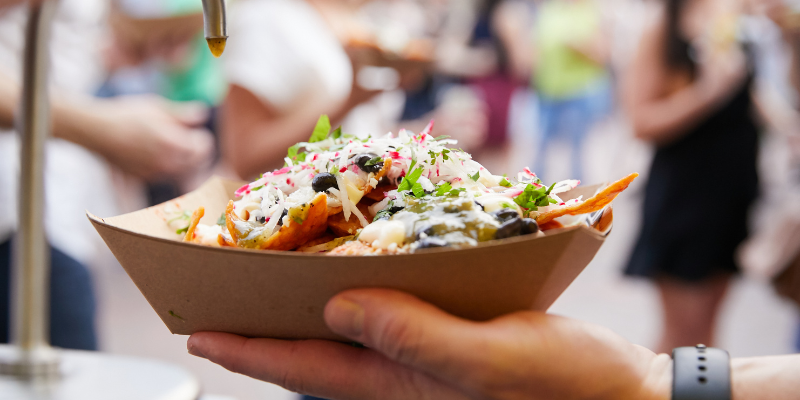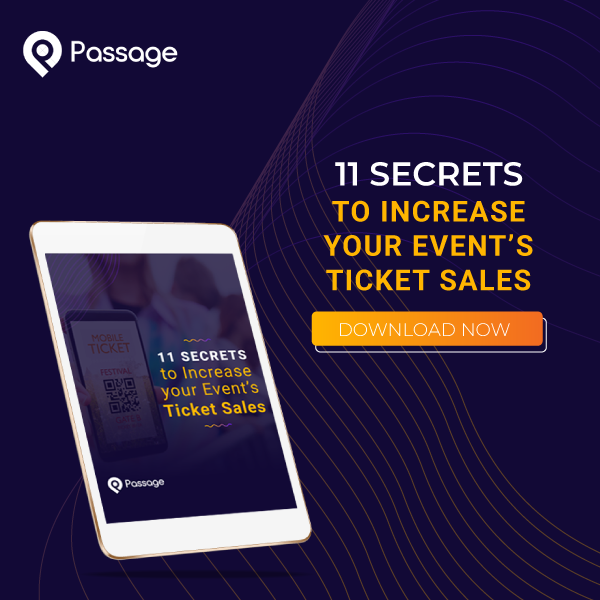Summer is in full swing, and that means it’s festival season! All across the country, events celebrating the best food, beers and even wines are growing in popularity.
One question we’re often asked is by event hosts and promoters is: How much should I charge for my festival?
There’s a sweet spot that makes ticket prices attractive to guests and also allows you to earn a profit on your event. Finding the right price starts with identifying a pricing model. That is, the type of admission you’ll offer and what that includes. Some events choose to charge one price for an all-you-can-enjoy model. Others let guests pick and choose which experiences they want to pay for. Neither one is right or wrong, it’s about finding the model that fits best for your event or festival.
Read on as we break down three common festival pricing models and for which types of events they work best.
1. Free Admission
You might be wondering why on earth you’d host a free event. How will you make money if guests aren’t paying admission? The answer is through a-la-carte sales at each booth your festival hosts.
Free admission can be very appealing because guests aren’t worried about consuming a certain number of sample sips to make up for their ticket price. They can peruse the festival booths and decide exactly which (and how many) brews they want to sample based on their tastes and the prices.
This option can also work nicely for outdoor events without clearly defined boundaries, or when you want to allow guests to come and go as they please throughout the day and night. However, you’ll need to consider your overhead before offering free admission. Will you be able to cover your costs through profits from your vendors alone?
Free Admission might be right for you if:
- Your event has multiple entrances and allows for re-entry throughout the day/weekend/week.
- You have diverse vendors (think: a mix of food, drinks, and merch) who want to set their own pricing.
- You’re hosting a family-friendly, all-ages festival and don’t need to check IDs at the door.
2. Entry Fee + Booth Sales
If your festival offers live entertainment such as music in addition to food and drinks, you might want to charge admission to the event itself. The same goes for events where every guest receives a souvenir glass (for beer, wine or cocktail tasting) or something else of value as soon as they walk in the door.
But charging admission doesn’t have to mean a one-price-fits-all model. You can still offer guests some flexibility by charging a small fee for festival admission (e.g. $10) and then selling either samples or full-sized pours and bites at various booths.
Some events handle this with credit card swipers at each booth, while others have a central “ticket” booth or two, where guests purchase paper tickets which can then be redeemed for drinks or food around the festival. Which option you choose depends on your event’s details. Allowing each vendor to accept cash or credit cards means setting up more infrastructure (i.e. swipers and cash drawers), but it also allows you to track every sale digitally so it’s easier to divide up the funds at the end of the day. Paper tickets are simple (and sometimes guests over-purchase which is basically free money for you), but you may have more math to do after your event when you’re paying out vendors.
Entry Fee might be right for you if:
- Your festival takes place all day or spans more than one day.
- You’re hosting live entertainment.
- You can easily control the flow of traffic in and out of your venue.
3. All-Inclusive
All-inclusive packages are appealing because of the convenience factor. As a guest, you know exactly what you’re paying up front. Then you can just kick back and enjoy yourself at the festival. If you don’t like one of the drinks, just pour it out and try another; that’s the beauty of all-inclusive.
For event hosts, all-inclusive has its benefits, too. Calculating and managing your festival’s budget is much simpler with this model. If most of your tickets are sold in advance of your event, you’ll be able to see how much revenue you have coming in and plan how to cover your expenses.
An all-inclusive pricing model doesn’t have to mean you only offer guests one ticket option. You can still give them an opportunity to upgrade to a VIP area – maybe a lounge with its own bar and comfy seating – or pay a little extra for a special pour (like an icewine or small batch bourbon).
All-Inclusive might be right for you if:
- Your event has a specific time frame (e.g. 7 p.m. to midnight or noon to 6 p.m.)
- Each vendor delivers a standardized pour or sample that’s consistent throughout the festival.
- You expect most of your ticket sales to take place in advance.










